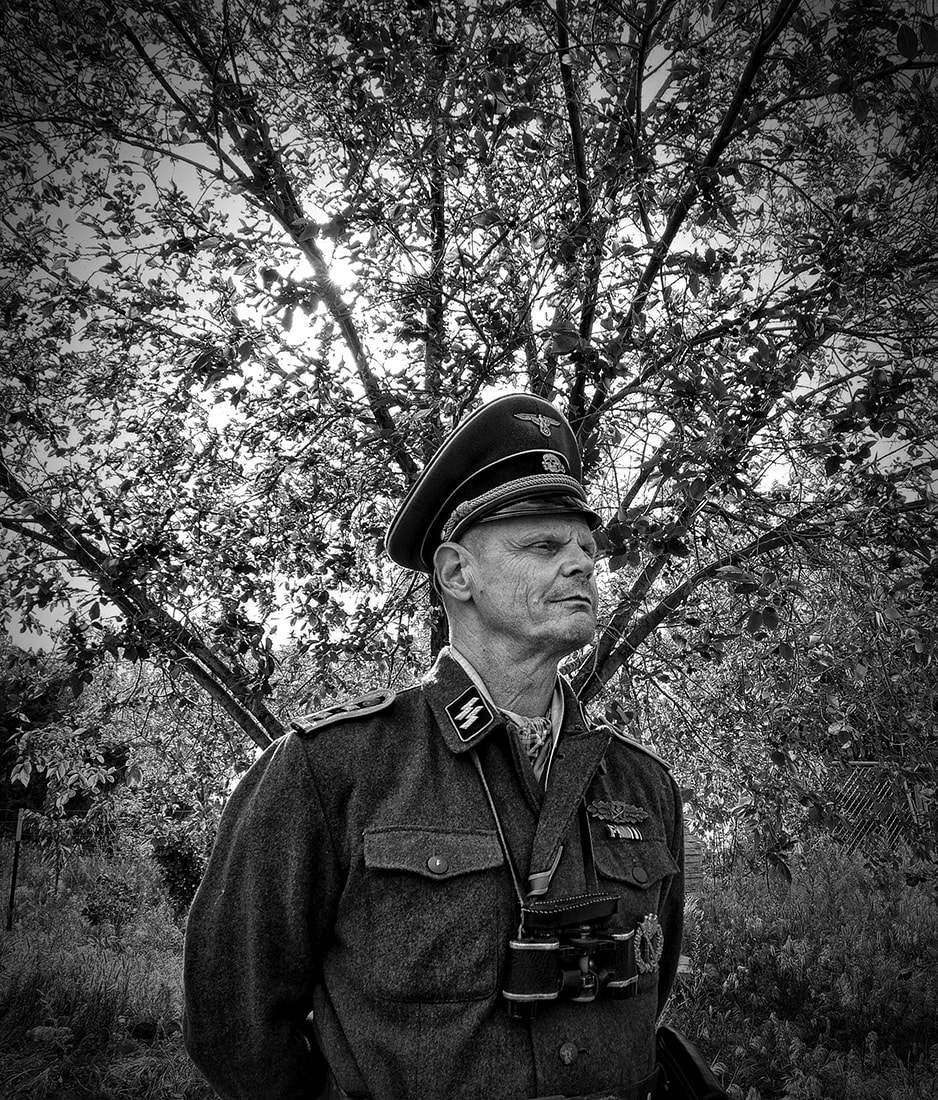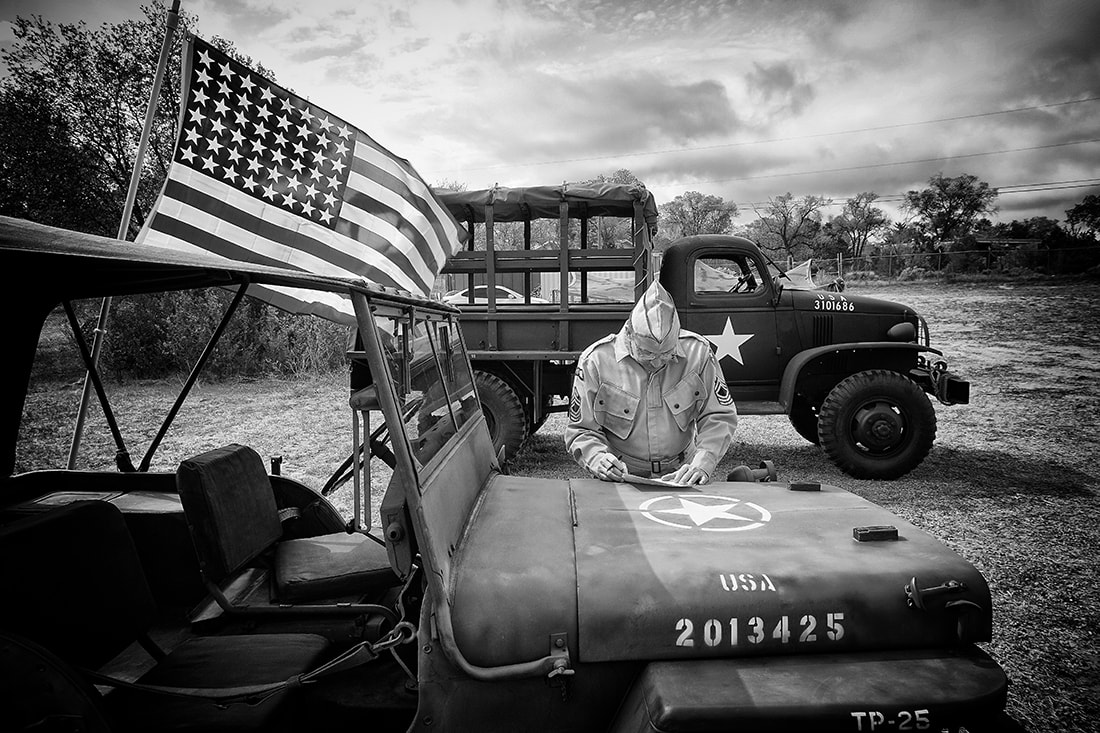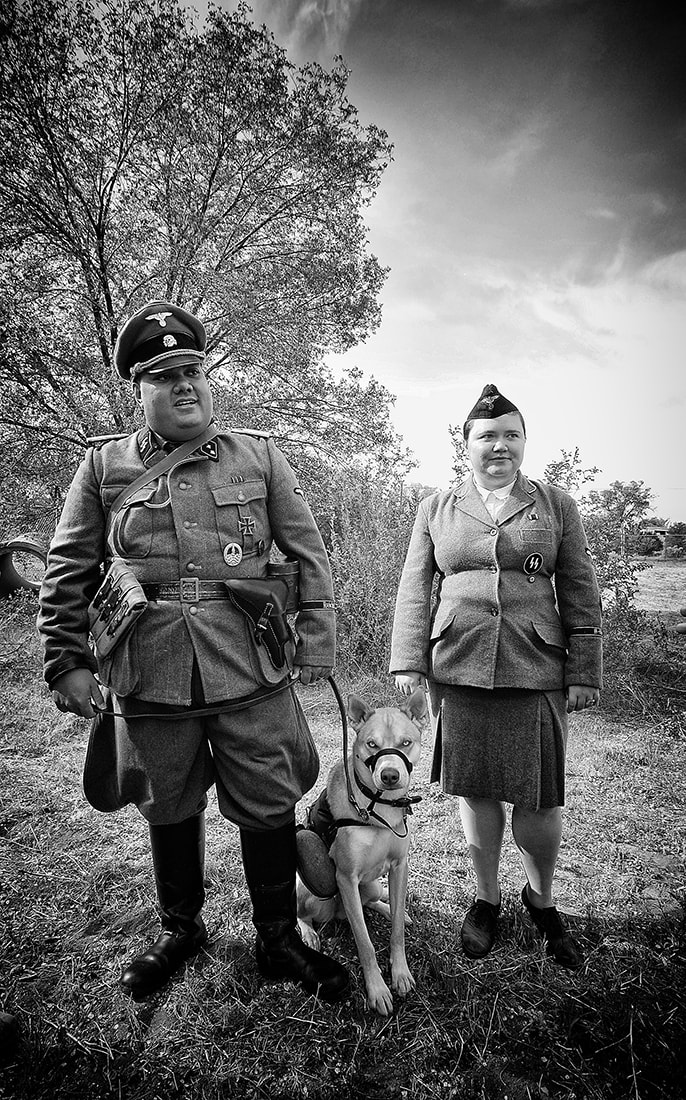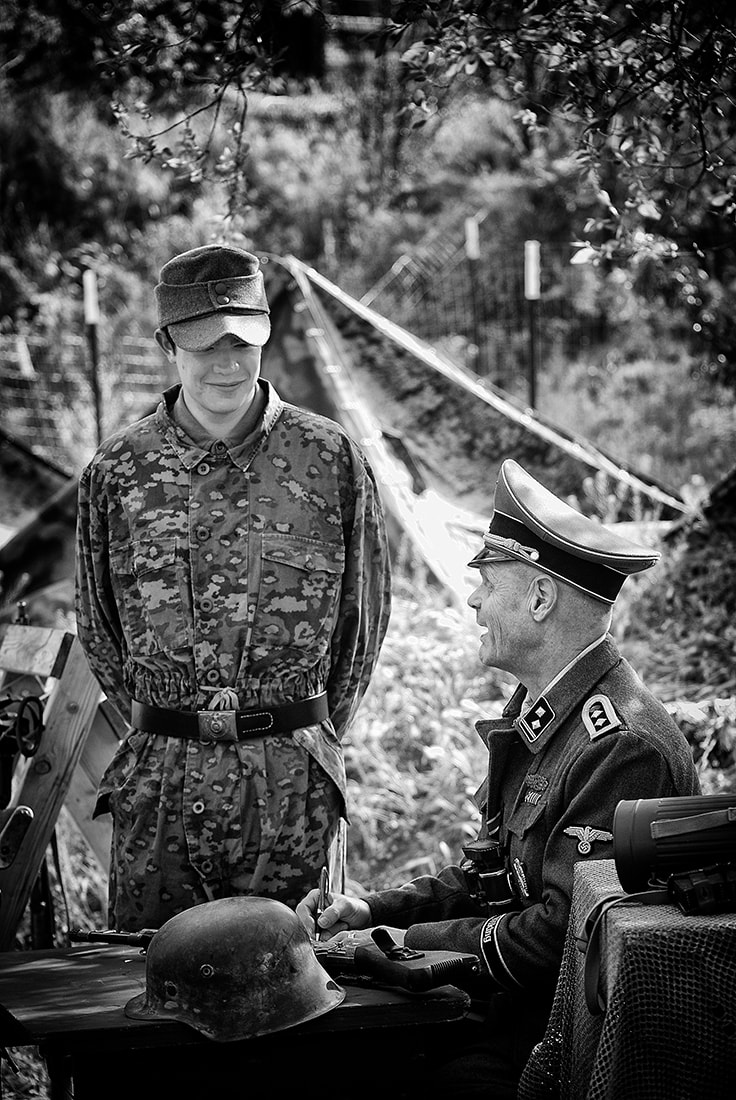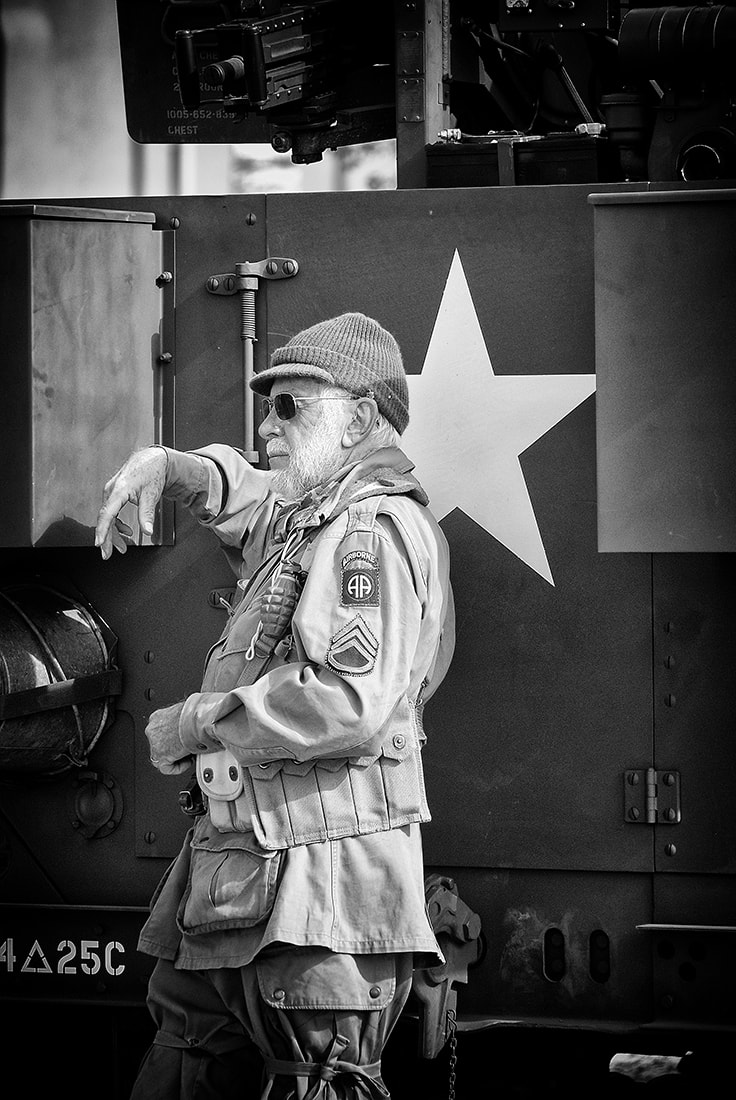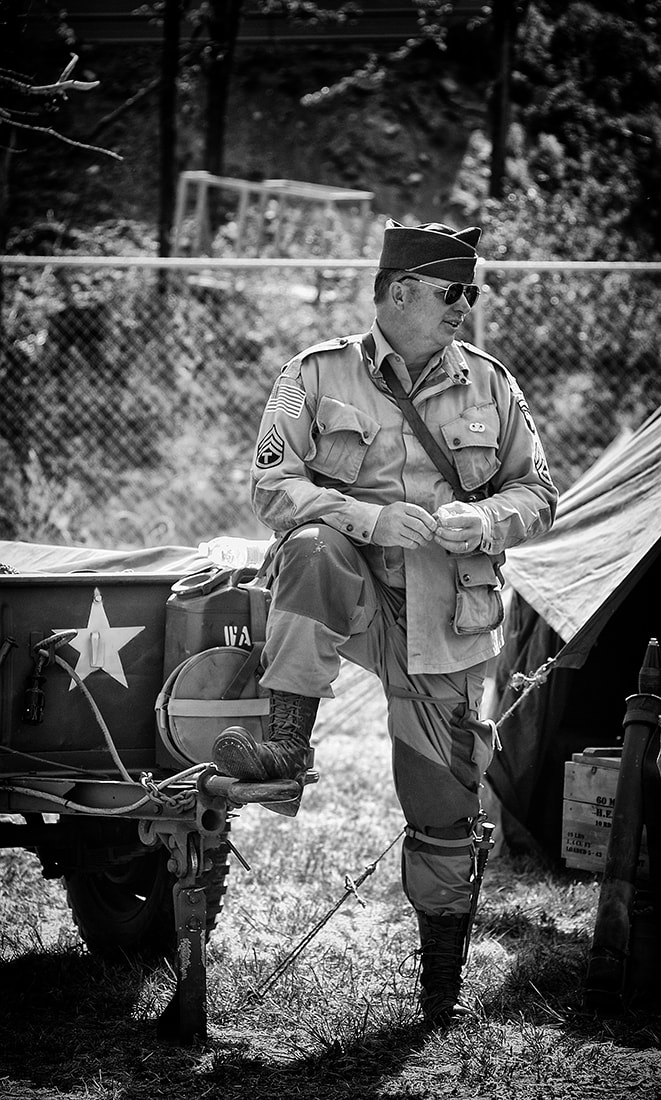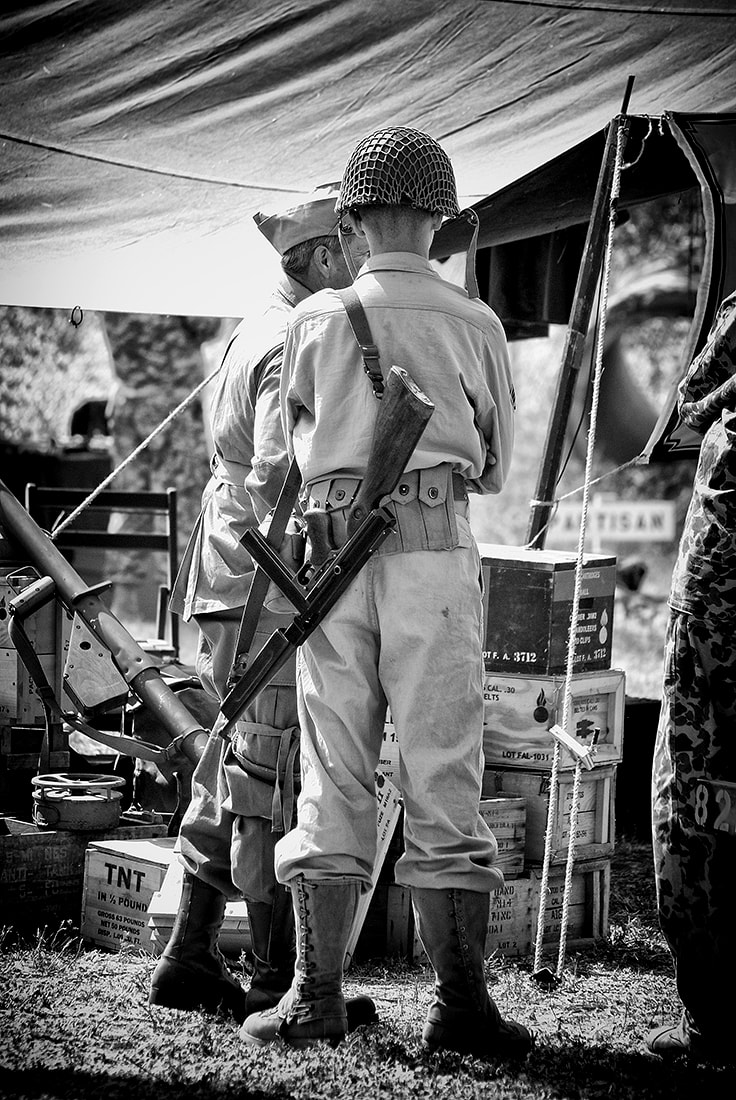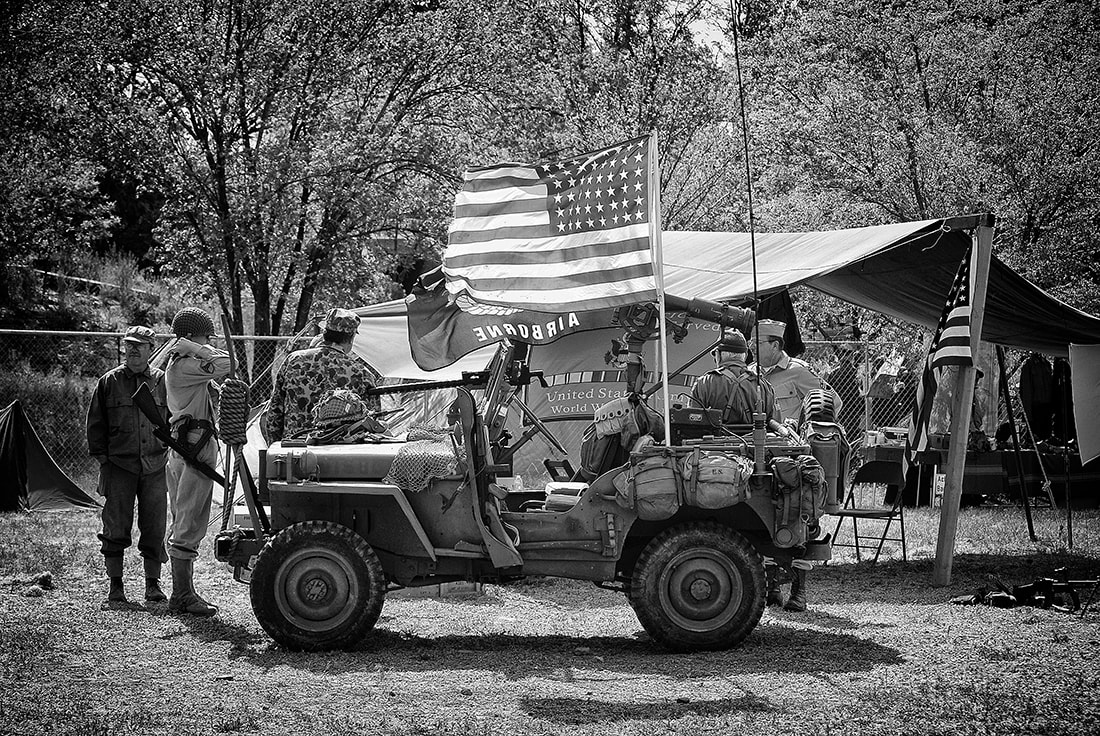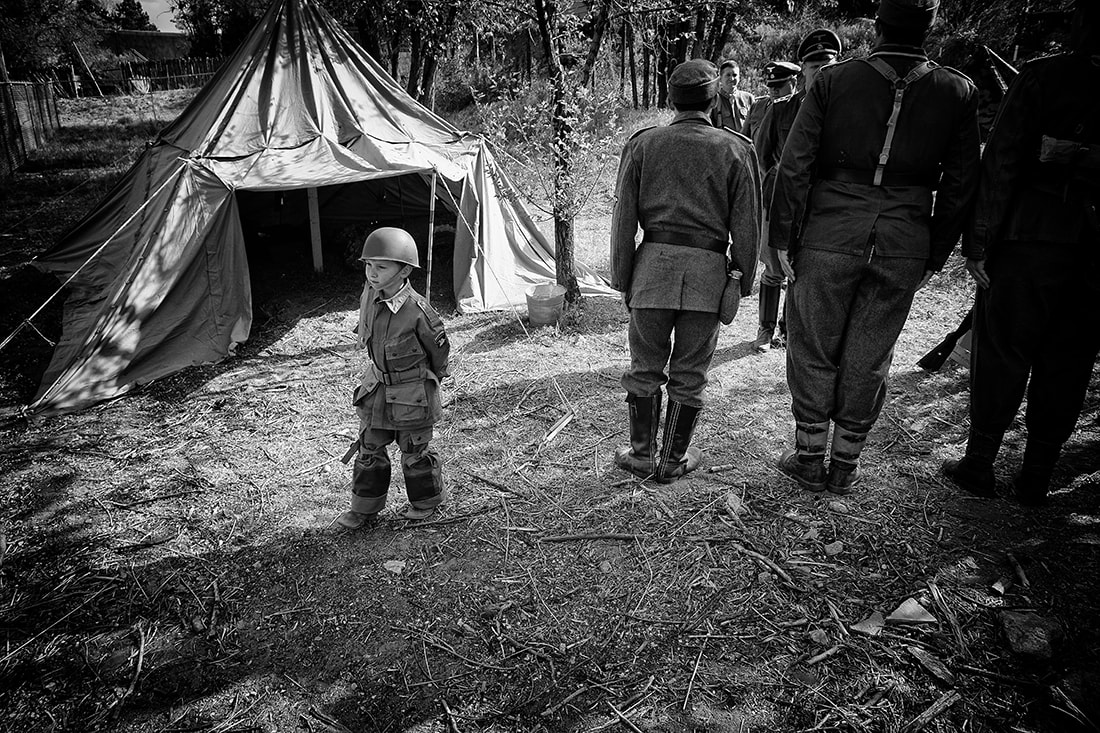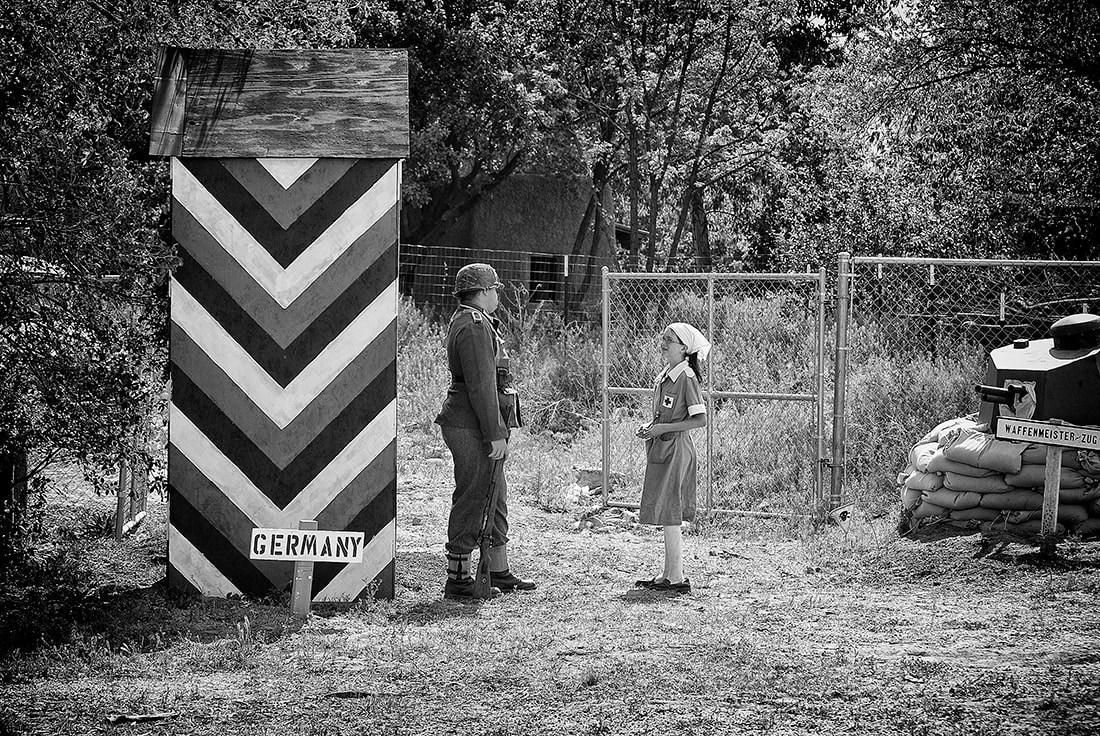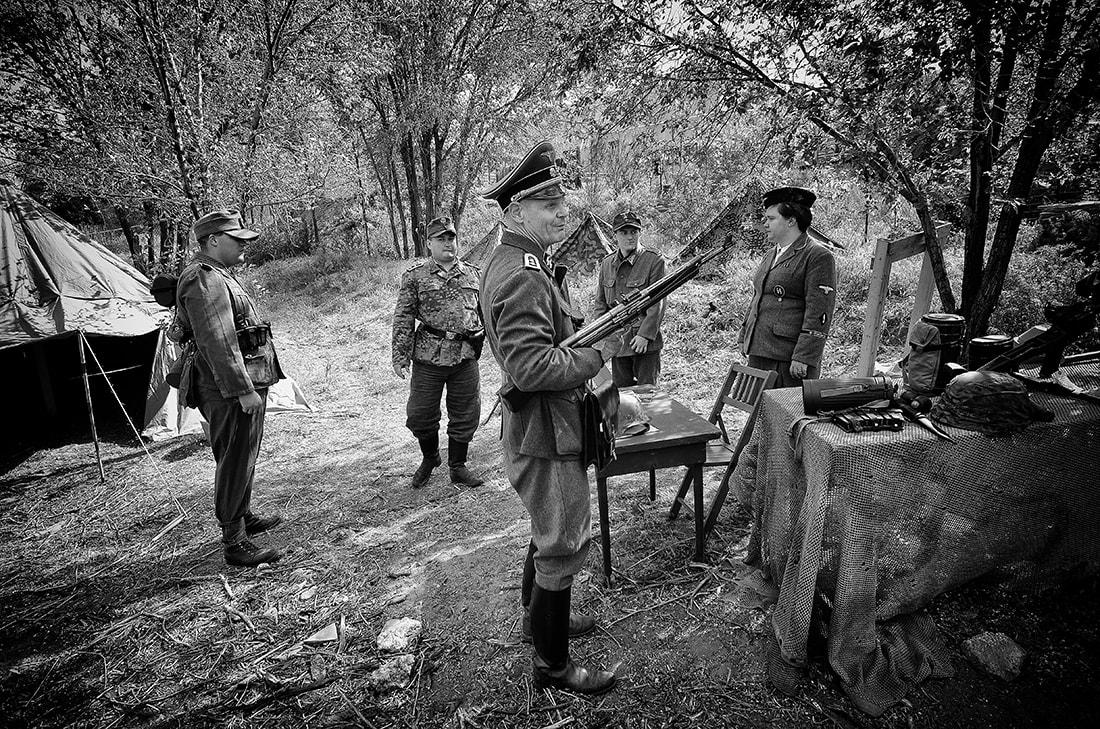WWII Reenactment in Santa Fe, New Mexico
|
Story and photos by Bob Eckert
Kurt Wolff (left) is standing amid some of his troops in a WWII German camp outside the National Guard armory in Santa Fe. He says the main reason he participates in an approximately once a month reenactment is to educate people. And his need to educate people is echoed by other participants at the event. They are there to pay homage to those who fought in the past and to educate the younger generation on what they may be unaware of in terms of military history. Wolff plays the part well, issuing orders in an abrupt German to his troops. He's a senior officer candidate with the recon element of the Fifth SS Panzer Division. He's telling them basic gun handling skills. You assume that because he is so good at this role, that he is particularly fascinated with Germany and the German army. "It not so much an interest in the German Army but that I'm fascinated with the wars of the United States Army," Wolff explains. Reenactments have become very popular of late. According to Wikipedia, the reenactment of World War II as a hobby in the United States traces its roots to the American Civil War reenactment. The types of events include living history, sometimes called a "barracks impression," which emphasizes the garrison life of the average serviceman or servicewoman, and tactical events, involving simulated combat operations. Wolff says, "The Germans were the biggest threat to our soldiers. People hear about the savagery of the Japanese soldiers, but their weapons were obsolete. Their tactics were attack, and then sit in a hole, and then attack again, swinging a sword at you." Most people think the Germans had submachine guns, but they actually had the first assault weapon, the Sturmgewehr, which was very much like the AK47. People may realize the German tanks were good, they just don't realize how good. The movie Fury has no relationship with reality. German technology, for instance the Leica camera, is astounding, and was well beyond its time. "We were fighting against jet aircraft," Wolff says. Albeit jets that flew so fast the pilots had a hard time aiming their weapons, but the point Wolff is trying to make is valid. The allies were fighting a technologically superior force. "We were fighting against ballistic missiles," Wolff continues. "I guess the thing I try to express to people is that the American soldier never backed down," Wolff stresses. "He (The American GI) would never go away. He knew what he was fighting for. He wanted his kids, or his brother or sister, to be able to pick up a newspaper and read it without having had the paper gone through by government censors. They wanted to go to their church of choice. They wanted to own guns privately, which you couldn't do in Germany. They didn't want to worry about having the wrong genetic heritage so I'm going to be rounded up one day when the government wanted to purify everybody just a little bit more and send them off to a gas chamber." You ask Wolff, "When you wear the German uniform, do you have problems with people becoming hostile and getting in your face? "I've had it happen twice and I tell them the same thing I just told you, that I'm educating people," Wolff says. "This is a role, just like being in a movie. Just like if Brad Pitt was playing an SS officer, only Brad Pitt is better looking. I want people to understand what our people had to go up against. What they faced. And I want to do it right." Wolff does reenactments all over the country. "I don't just do a German, I've also a Jewish partisan, (which one woman who is nearby takes offense to, telling Wolff that he would never pass as a Jew. He assures her that he could but she insists otherwise. You realize these two will never agree on this one). And I'm also a Russian NKVD officer and an Australian desert rat. And I play Americans as well. I guess the reason I don't do Americans as often is that I was in the U.S. Army so it's kind of a been there, done that sort of thing." Wolff says a lot of people tell him, "You really look the part. If you'd have lived back then you'd probably have been in the SS." "I tell them no, I would have been in a camp. I'm half Cherokee and half Scottish, so I look the part, but I wouldn't have fit their criteria." The reenactment was fascinating. it was like taking a time machine back in time. The people who do the reenactments, like Wolff, are dedicated and knowedgeable and have a lot of information to impart. The next time a reenactment comes around, you might want to check it out. You're bound to learn something. |
To contact Bob Eckert for assignments, consultations or workshops, please email [email protected]
or use the contact form on the About page
or use the contact form on the About page
